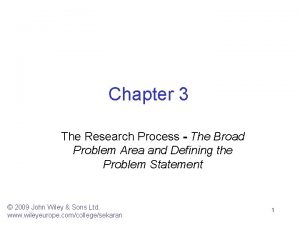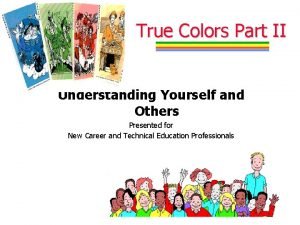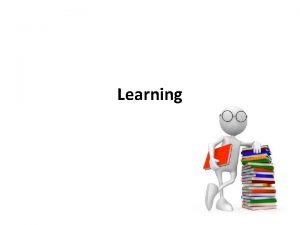LEARNING STYLES ChyAnne Rose Research defines learning styles



- Slides: 3

LEARNING STYLES Chy-Anne Rose

◦ Research defines learning styles as, “the term speaks to the understanding that every student learns differently. Technically, an individual's learning style refers to the preferential way in which the student absorbs, processes, comprehends and retains information. ” (web) As future educators it is important to be familiar with the different types of learning styles that students in the classroom can use. Dr. Dunn refers to this process in saying that, “'Learning style is the way in which each individual learner begins to concentrate on, process, absorb and retain new and difficult material. ” (web) There are seven different learning styles which are visual, aural, verbal, physical, logical, social, and solitary. Each of these styles are different but could be used in different combinations to help affect a variety of students instead of just one specific learning group. ◦ For example, a teacher could play a scene from a movie and use the visual style of learning. After watching the clip, the teacher could pair the students up and have them discuss the scene which would use the social and interpersonal learning style. After working in groups, the students could walk around the classroom and write down specific details from the movie onto poster boards hanging on the walls which would use the physical learning style. After the lesson, the students can split up and take a quiz over the topics learned by themselves which would be the solitary learning style. This is just one example of the many ways to incorporate multiple learning styles into one activity. Using multiple styles of learning is important so that students are aware that there is different ways to learn new things and that they do not have to be stuck doing the same things repeatedly. This will also help with student interaction and keeping the students engaged in the classroom activities. ◦ Figuring out the different learning styles in your classroom is extremely important. Research shows that, “Your preferred styles guide the way you learn. They also change the way you internally represent experiences, the way you recall information, and even the words you choose. ” (web) This means that each student is different and will not learn the same as one another. By getting to know each student in more depth, you will be able to connect with them and piece together different styles that can work to benefit them academically. All students want to succeed, it is just the matter of them having a teacher willing to go the extra mile to help them get there. Recognizing the different learning styles in your classroom is the first step to having a class full of success.

Resources ◦ Learning-styles-online. com. (n. d. ). Retrieved October 12, 2017, from https: //www. learning-stylesonline. com/overview/ ◦ What is Learning Style? (n. d. ). Retrieved October 12, 2017, from http: //www. ilsa-learningstyles. com/Learning Styles/What is Learning Style. html ◦ Learning Styles. (n. d. ). Retrieved October 12, 2017, from https: //teach. com/what/teachers-teach/learningstyles ◦





